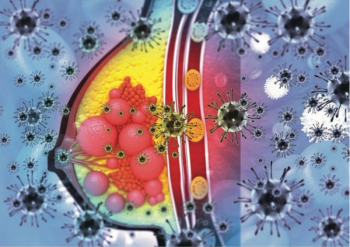
- Oncology Vol 28 No 4_Suppl_1
- Volume 28
- Issue 4_Suppl_1
(S010) Prospective and Real-Time Data Analysis of Image-Guided Radiotherapy Across a Multinational Pediatrics Consortium: Methodology and Considerations
We describe a method for prospectively collecting real-time, longitudinal datasets evaluating central nervous system (CNS)-directed IGRT across a multinational pediatrics consortium.
Sara R. Alcorn, MD, MPH, Todd R. McNutt, PhD, Michael J. Chen, MD, Karen Dieckmann, MD, Ralph P. Ermoian, MD, Eric C. Ford, PhD, Shannon M. MacDonald, MD, Alexey V. Nechesnyuk, MD, Kristina Nilsson, MD, PhD, Rosangela C. Villar, MD, Brian A. Winey, PhD, Erik J. Tryggestad, PhD, Stephanie A. Terezakis, MD; The Johns Hopkins Hospital
Background: In the pediatric population, there is a lack of consensus regarding the optimal technique for use of image-guided radiotherapy (IGRT), with no published comprehensive comparison of practices across institutions. This may be due in part to difficulty in collecting and analyzing large datasets amassed using varying techniques and technologies across institutions internationally. We describe a method for prospectively collecting real-time, longitudinal datasets evaluating central nervous system (CNS)-directed IGRT across a multinational pediatrics consortium.
Materials and Methods: Nine international institutions with dedicated pediatric expertise agreed to participate in data collection and analysis of IGRT practices for patients aged ≤ 21 years treated to CNS sites. Two institutions use proton therapy for children, and all others use image-guided intensity-modulated radiation therapy (IG-IMRT). Key demographic and treatment variables of interest were prospectively identified by consortium members, and standardized assessment tools interfacing with the MOSAIQ™ radiation oncology information system (OIS) were produced to capture these variables. Institutions then entered data into the OIS-based assessment tools in real time as patients accrued and during treatment. Each institution was capable of accessing its corresponding full dataset for internal purposes, whereas software was developed to allow for subsets of de-identified data to be extracted and submitted to a central database for analysis. These data were accessed through a series of coded queries, and output was compared both within and across institutions. Descriptive statistics were calculated, and chi-square and linear regression analyses were performed.
Results: To date, this methodology has allowed for successful access to the prospectively identified dataset of 46 pediatrics patients from two photon- and one proton-treating institutions. While data collection for the remaining sites is ongoing, an estimated 500 pediatric patients will be accrued yearly across all institutions. Sample output for patients treated with photon therapy showed a median age of 11.6 (range: 3–20 yr) and baseline Karnofsky performance status (KPS) of 80 (range: 30–100), with treatment to a median dose of 54 Gy (range: 24–59.4 Gy) over 30 fractions (range: 12–33 fractions). From the dataset of 2,715 translational table shifts collected from 905 pretreatment cone-beam CTs, a mean translational table shift vector magnitude of 3 mm was calculated. The consortium dataset also allowed for hypothesis generation, with preliminary univariate analyses showing that use of anesthesia was significantly associated with table shift vector magnitudes that were less than the mean value of 3 mm (P = .021). Conversely, potential predictors, including age, gender, immobilization type, degree of surgical resection, concurrent chemotherapy, KPS, and planning target volume, did not reach statistical significance in the preliminary analyses.
Conclusions: We describe a method for prospective and real-time data collection that allows for analysis of large datasets of de-identified patient and treatment information across a consortium of multinational institutions. Given the scarcity of data to guide IGRT use in the pediatric population, such methodology provides a novel means for describing breadth of practice and establishing consensus recommendations for IGRT. To our knowledge, this is the first report of the successful deployment of such methodology for analysis of the pediatric population.
Proceedings of the 96th Annual Meeting of the American Radium Society -
Articles in this issue
Newsletter
Stay up to date on recent advances in the multidisciplinary approach to cancer.

















































































